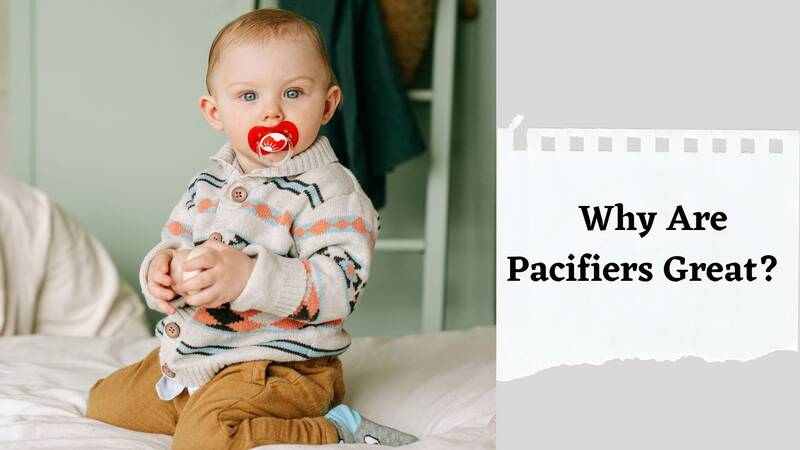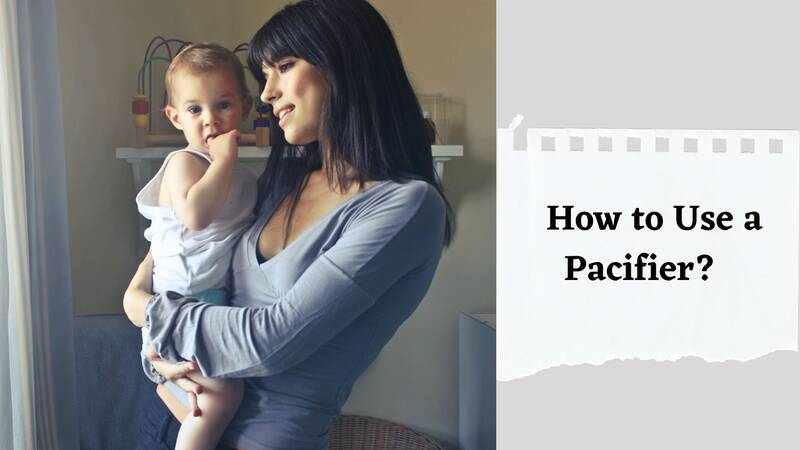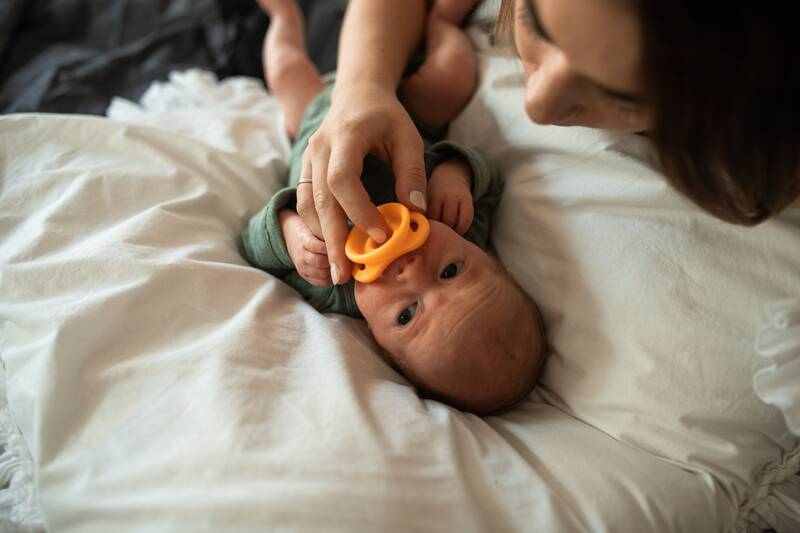It may appear to several parents that the binkies, dummies, pacis, or whatever term you prefer for the pacifiers to happen are something that has come to their best rescue.
These pacifiers can also act as the ideal solution for the little ones who love sucking on anything that they can and helping the infants self-soothe.
It is the reason why you should know how to fix pacifier teeth.
A few kids might be experiencing dental problems due to the constant use of the pacifier user for a prolonged period, leading to pacifier teeth damage.
Understanding how the comfort objects would lead to oral issues would help parents avoid encouraging pacifier teeth in their kids.
Contents
The Best Treatment For Pacifier Teeth

The pacifier can lead to several dental issues leading to the growing concern for several parents. So how to fix a pacifier tooth?
It is where the answer should be, depending on.
There is no complete consensus within the dental community of pediatrics.
But, several professionals mention that when the kid is weaning off a pacifier, it would directly affect the permanent issues with dental health.
For instance, the issues detected before 24 months of age will often be rectified on their own within six months from when the kid is weaning.
There are no dental interventions needed in this case.
For kids older than 24 months exhibiting the pacifier teeth, on the other hand, there is a risk where orthodontic appliances would be the only way to rectify the dental issues that come up.
It is quite true for kids who are four years and older as it is this time when the adult teeth start forming under the baby teeth.
Read– Essential Oil For Toothache
Why Are Pacifiers Great?

There are several benefits associated with pacifiers and thumb-sucking, although it at times leads to the risk of dental issues.
Some experts would agree that there are thumbs that will be serving four distinctive uses.
1. Boosts the self-soothing habits in babies
Pacifiers are the best form of self-soothing element for babies, and they can be quite helpful while you are exhausted and require a smaller break from holding your kid.
The pacifier can often aid in relaxing the baby so that you get to attend to other things like munching on a quick meal or even having a moment to breathe and sit.
2. Helps in weaning
The pacifiers will serve as a great segue that makes their way through the processes easier for the kids to handle if you are prepared to wean your infants.
But, keep in mind that the best way would be to wait until you are established in a nursing routine before introducing the pacifier to newborn babies.
Remember that it mainly takes about 3 to 4 weeks to set in.
3. Reducing the chances of SIDS
It is mainly one of the major benefits of pacifiers present in their link for the distinctive reduction in the risk of sudden infant death syndrome or SIDS.
Professionals, including the American Academy of Pediatrics AAP, encourage parents of infants to place their babies in bed and take a nap with a pacifier.
But, the pacifiers should never be attached to your baby’s clothing or any stuffed animals, as well as the straps that would lead to suffocation and accidental strangles.
4. Ease of discomfort in the nursing areas
Pacifiers will be able to lessen the discomfort in nursing infants along similar lines as that of self-soothing.
A few studies aimed mainly at the neonatal intensive care units or NICUs 2009 revealed that the premature babies given pacifiers showed signs of progression faster from tube feeding to nursing.
But, the preemies in NICUs are not similar to the health of the present babies in the residences.
Do not give pacifiers to babies who are not already nursing or feeding unless they are advised to do so with the lactation consultant’s help or the baby’s pediatrician.
Read– Why Does Mouthwash Burn?
Dental Issues Caused by Pacifiers
Pacifiers mainly come with potential adverse effects for every benefit leading to dental issues.
As the kid uses the pacifier for a longer time, in most cases, oral problems develop.
Misaligned bites
The misaligned bit is considered the most prominent risk from the overuse of the pacifier, and it would include an open bite, crossbite, and other kinds of malocclusions.
Specifically, these are the dental issues commonly witnessed in the aging kids who still use pacifiers.
The prolonged use of the pacifier would force the teeth of the kid to move and change the shape of the mouth’s roof to accommodate the constant existence of a foreign object.
For instance, studies found that malocclusions existed in 71 percent of kids participating in the continued use of a pacifier or sucking their thumbs for the past four years.
In comparison, about 35 percent of the kids who stopped thumb-sucking or pacifiers between the ages of 3 and 4 had visible signs of malocclusions.
About 14 percent of the kids who stopped sucking their thumbs or using pacifiers by a couple of years have displayed this condition.
Cavities & Gingival recession
The use of a pacifier is linked to gingival recession or gum loss and pediatric cavities in a few extreme cases.
These are the oral conditions that result from the parents dipping the pacifiers in sweeter substances.
While there are kids, they might have a tasty treaty, and who would not?
It would expose the teeth and gums to sugar, encouraging the buildup of plaque leading to the formation of cavities.
Read– Why Does My Jaw Hurt?
How to Use a Pacifier?

There will be no reason to be afraid of using pacifiers as long as you can practice proper hygiene that is mindful while it is the time for weaning your kid—being one of the best pacifiers for teeth.
-
Sharing isn’t caring
Never share pacifiers with your kids. Sharing the pacifiers will expose your kids to bacteria, thereby encouraging cavities and the occurrence of general infections besides something gross.
-
Just the pacifier
You need not, even if you are quite tempted to dip your baby’s pacifier in sweet things, to encourage the adoption of a pacifier.
Leave the gum and make the set of pearly whites exposed to the sugar, eventually leading to the development of cavities.
-
Get the right size
You may be quite surprised to locate the pacifiers that have come a great way since you have used one if you are new to baby care, and they come in varied sizes.
Mainly, they are enlisted within the age range that is recommended.
Getting hold of the right size would mean that you should not be using large pacifiers for them.
Likewise, the pacifier shield would be quite smaller, while your baby can risk choking on your pacifier.
-
Make use of the recommended orthodontic pacifiers
You can choose the orthodontic pacifiers if you are concerned about a pacifier that causes a misaligned bit. These pacifiers will not have the classic round shape like a nipple. They are quite flat, allowing your baby’s jaws to be in the right alignment when they suck.
Despite many claims, no studies show that orthodontic pacifiers would decrease the risks of any dental problems. Please speak with the pediatric dentist when you are interested in the orthodontic pacifier while several endorse them. Always wean your kid off any pacifier at the right age to avoid dental problems.
Read– Black Tartar On Teeth
The right age to take the pacifier away
There is the continued use of a pacifier that would encourage oral issues as early about 24 months of age.
But, there are none for every kid or family.
For instance, a few physicians would recommend the reduced use of pacifiers between the ages of 6 and 12 months due to the elevated risk of contracting ear infections and otitis media.
It is also supported by the AAP and the American Academy of Family Physicians as of 2009.
The AAP has mentioned quite recently that pacifier use beyond two years of age would lead to issues with your baby’s teeth.
Still, these are the issues that are quite reversible if your kid stops the sucking behavior before their adult teeth would enter.
The American Academy of Pediatric Dentistry is advised to stop using a pacifier after the age of 3 years.
Kids should still not be using pacifiers of any kind by the age of 4 as the risk of dental problems is higher.
Read– Do Cavity Fillings Hurt?
Frequently Asked Questions
Below we share some FAQs related to the “Pacifier Teeth”.
Is thumb-sucking good or a bad habit?
The vigorous thumb-sucking can be quite problematic for the teeth of the kid orbiting, like using a pacifier leading to dental issues.
The kids can continue sucking their thumbs which are mainly four years old and would be having several dental issues for the ones who use pacifiers.
What does a pacifier do to teeth?
The pacifiers and the thumb-sucking are quite referred to as the pacifier teeth as the pacifiers will be causing malocclusions and other teeth issues.
The teeth and the mouth have already become misaligned with the unfortunate truth that is generally will not be able to rectify on their own if the habits have gone on too long.
At which age does a pacifier affect the teeth?
Professionals often explain that pacifiers are quite beneficial at a young age, but to best avoid their hazardous effects on the teeth.
You should be taken away at the age of two as it is when the dental effects are visible.
Will the pacifier create a gap in teeth?
The pacifiers will be causing issues for your kid, mainly in terms of their oral health.
The American Dental Association will be keeping a note that both the pacifier and the thumb-sucking would be affecting the right kind of growth of the mouth and the alignment of teeth.
They will also be leading to the transformations of the roofs on the mouth.
Will the pacifier alter the shape of the mouth?
Pacifiers can lead to harmful growth and the development of teeth and mouth.
The extensive use would lead to changes in the shape of the mouth roof.
The extensive use will also prevent the right kind of growth of the mouth, creating issues with the alignment of the tooth.
The pacifiers will also increase the risk of acute infections in the middle ear.
When do you get rid of the pacifier?
You should never try getting your child to quit pacifiers before they are about six months old since pacifiers are beneficial for infants.
These would help them to sleep, and it is noted that it has reduced the sudden infant death syndrome.
Do is remove the pacifier when the baby is asleep?
The pacifier will aid in reducing the risk of SIDS or sudden infant death syndrome.
The risks of SIDS are reduced by sucking on the pacifier during naps and bedtime.
You can throw them away when it is time to stop using the pacifiers.
Is a pacifier worse than a thumb?
SIDS can be significantly removed by sucking on a pacifier while falling asleep would reduce this risk, and neither would be the ideal choice.
The pacifiers will be the reason for the ear infections, but thumb sucking would be adding germs to your baby’s mouth.
Are different sizes of pacifiers required for babies?
There are about two main sizes of pacifiers based on your baby’s age.
You can replace your baby’s pacifiers with one size for babies of about six months and more after they turn five months. Select the pacifiers with the softer nipples and ones safe on dishwashers.
Does speech gets affected by the pacifiers?
According to a few studies, it is seen that the extensive use of pacifiers would result in increased infections in the ears, malformations in teeth, as well as other oral structures leading to speech and language delays.
The key takeaway
There would be no reason for tossing the pacifiers of your kids yet when you try to discontinue the use of the pacifier to reduce pacifier teeth.
In childhood, some benefits are associated with pacifiers, offering them one of several effective tools for parenting.
Read– Black Spot On Tooth
- Understanding HIPAA Compliance: Obligations for Covered Entities & Business Associates - April 18, 2024
- Things to Invest in for the Easter Season in 2024 - March 29, 2024
- Why Experience Matters: Finding An Established Dental Implants Provider - March 29, 2024
